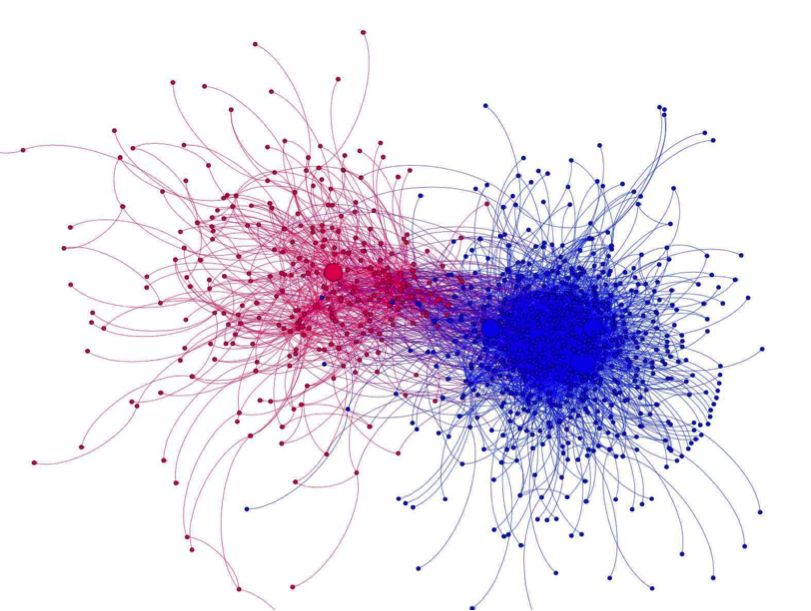Twitter Analysis Reveals Deep Political Divide over Ferguson Shooting

Twitter has hosted opinions about Ferguson since the incident first gained national attention, with organizers using the platform to plan protests and users adding their two-cents in 140 characters or less.
However, recent analysis reveals that while there is constant chatter surrounding the shooting, riots, and subsequent grand jury hearing, users remain deeply divided on the issue. What’s more, users seem to be entirely unreceptive to opposing views on the issue.
As you can see in the graphic below, the “red" and “blue” users are talking past each other. The self-identified conservative tweeters and the self-identified liberal tweeters ignore each other on the social network:
People mostly tweeted right past each other when talking about Ferguson. (Emma Piers)
In the image, as explained by statistician Emma Pierson, who published her analysis on Quartz, "each point is one of the most talkative tweeters, and two points are connected if one mentions the other: in essence, the image depicts the social network of who talks to whom. It shows two clearly divided groups."
Pierson continues:
"So maybe if everyone would just talk to each other they would get along? Not necessarily: when the red and blue group did talk, it often wasn’t pretty."
Twitter, if used productively, has the capacity to connect people from all corners of the globe with ideas and analysis they might otherwise be blind to. If used unproductively, it becomes an echo chamber, further highlighting our inability to engage with users who may not share our views.
This problem is not unique to Ferguson. It is not unique to Twitter. It is the very root of what is wrong with American politics today and sheds light on the underlying divisions that partisanship breeds.
People with opposing views don’t know how to have a civil, respectful discussion about politics. That’s why most Americans just avoid getting involved in the political process altogether.
With a mainstream media that favors sensationalism over rationality, who can blame them for sitting out of the debate? By viewing controversies through a “red” v. “blue” lens, the news available to Americans presupposes that there are only two sides to every story -- only two solutions to every challenge facing the nation. This is just wrong.



